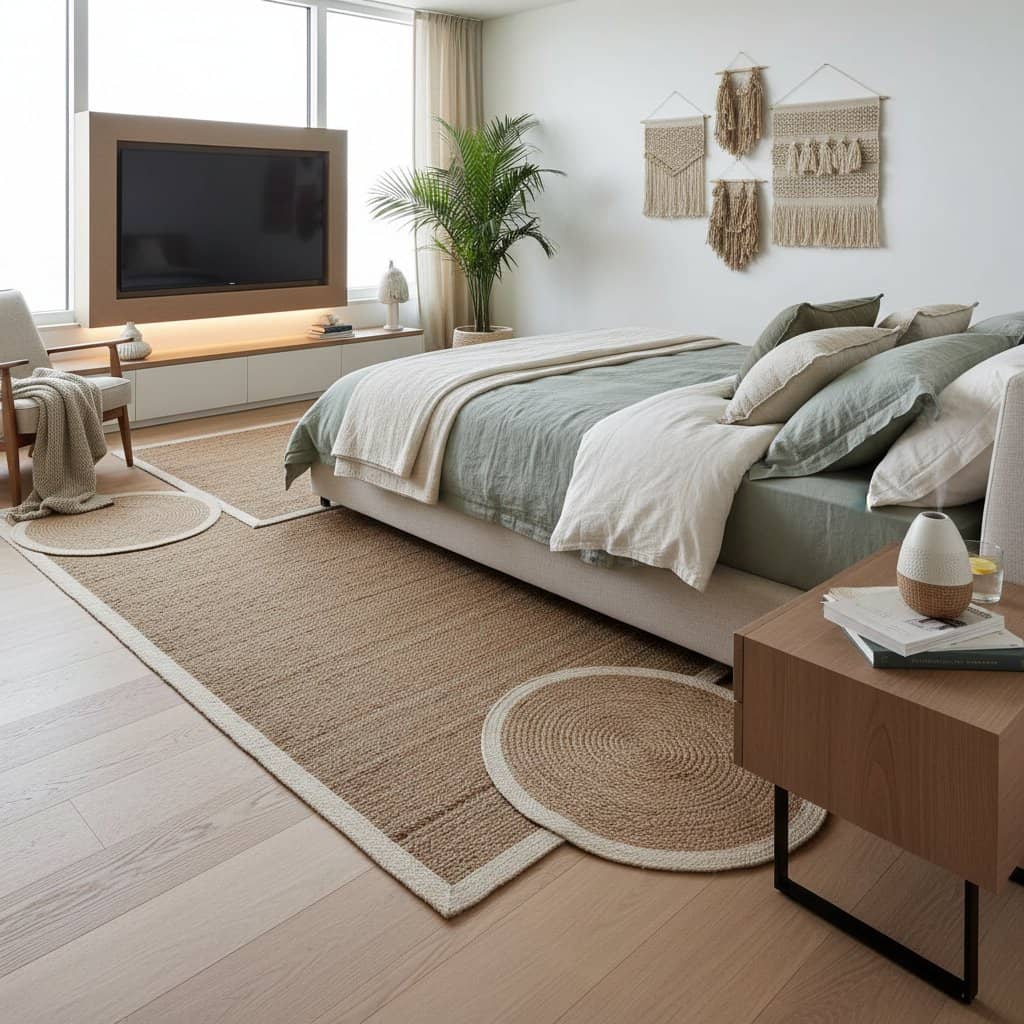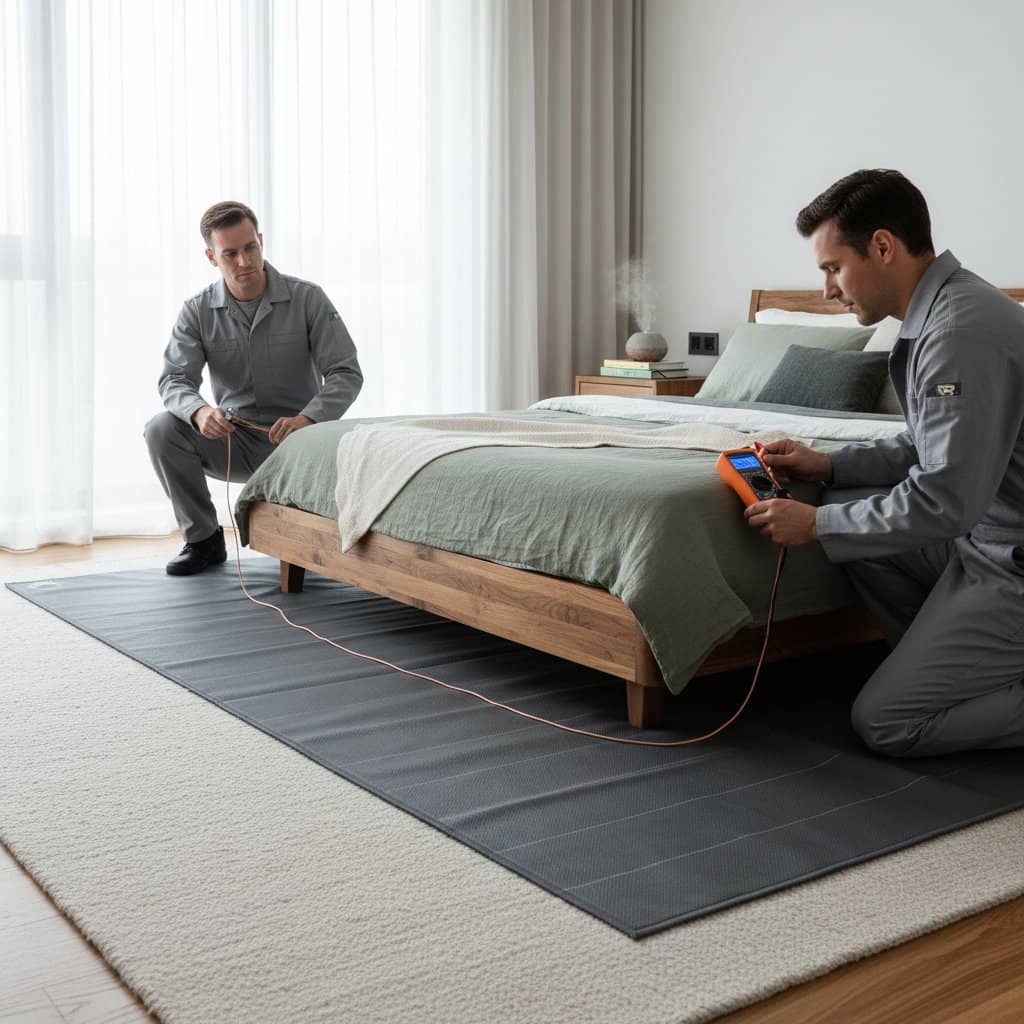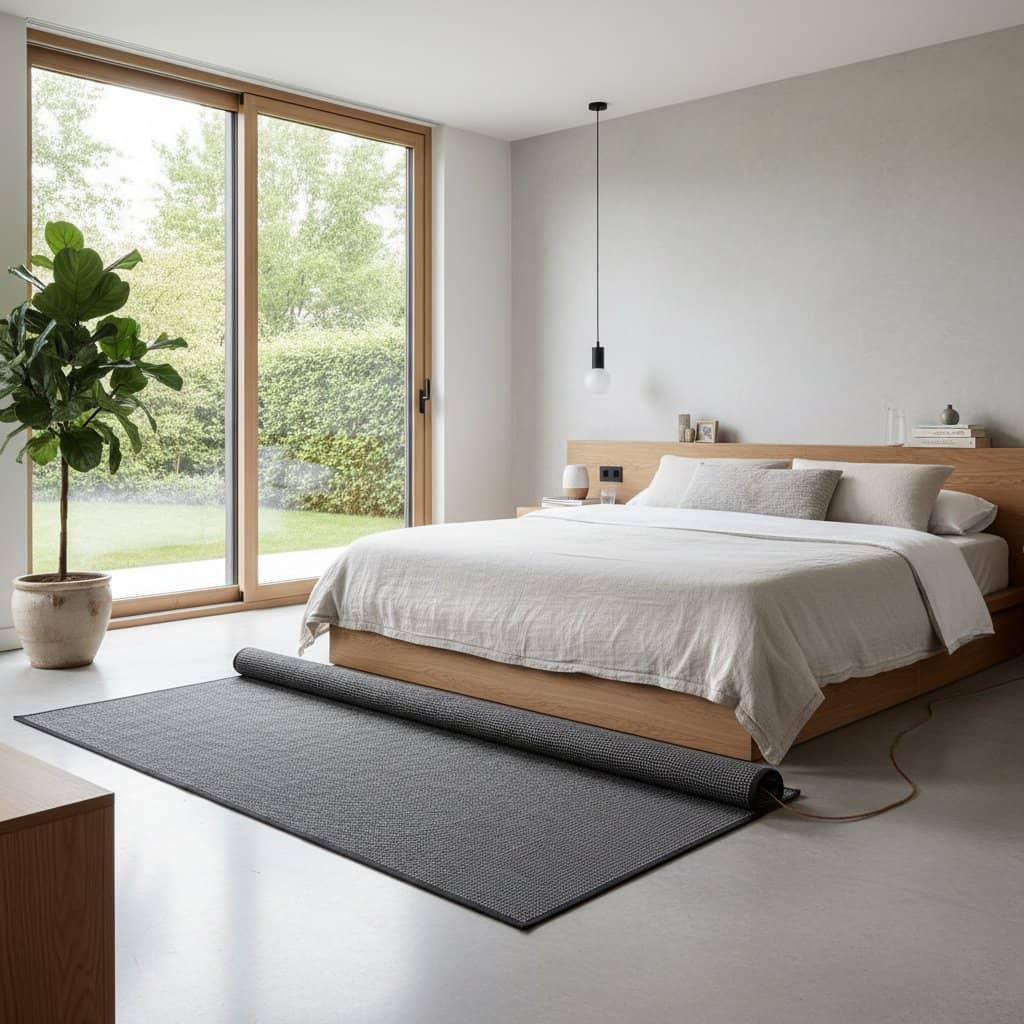Grounding Mats: The Wellness Flooring Trend Entering Mainstream Homes
Suppose you encounter the term grounding mat for the first time and notice yoga instructors and interior designers discussing it frequently. Perhaps you observe one positioned under a colleague's desk, resembling an elegant mouse pad with hidden functionality. Grounding mats, previously limited to dedicated wellness practitioners, now appear in mainstream settings such as bedrooms, offices, and living areas beneath rugs. They deliver a discreet yet effective link between the body and the earth's surface.
Rising Interest in Grounding Practices
Picture removing your shoes after a long day and placing your feet on a surface that feels refreshingly cool and vibrant. This goes beyond ordinary soft flooring or a comfortable rug; it establishes a conduit to the earth's inherent electrical energy. For numerous individuals, this contact evokes tranquility and renewal. The attraction stems from the recognition that contemporary lifestyles, characterized by synthetic surfaces and prolonged exposure to screens, have isolated people from the planet's natural charge. Grounding mats, also known as earthing mats, provide a method to restore that connection.
Wellness practices often draw from time-honored traditions. Grounding originates from the basic act of walking barefoot on grass or soil. The contemporary mat serves as an adaptable solution, enabling individuals to replicate this bond amid urban environments with concrete and carpeted floors. Whether the goal involves achieving sounder sleep, alleviating muscle tension, or introducing serenity into daily surroundings, grounding mats offer a straightforward entry point.
How Grounding Mats Function
A grounding mat consists of a conductive pad linked to the earth via a grounding wire. When connected to a grounded electrical outlet or an external rod, it conveys the earth's mild electrical charge to the user. Although the principle might appear complex, application proves straightforward: position bare feet or hands on the mat during work or rest.
Scientific exploration of grounding remains ongoing, yet users frequently describe outcomes including diminished stress, enhanced blood flow, and superior sleep. Studies indicate that physical contact with the earth could neutralize the body's electrical imbalances, potentially lowering inflammation and aligning circadian patterns. Even as mechanisms receive further investigation, positive user experiences sustain the practice's momentum.
Evolving Aesthetics: From Functional Tool to Interior Element
Grounding mats transcend their origins as plain black rubber pads concealed under desks. Designers now incorporate them into comprehensive interior schemes. Options include textured weaves that harmonize with jute rugs or minimalist profiles suited to Scandinavian-style floors. Certain installations embed grounding strips within flooring assemblies, yielding rooms that maintain an unbroken earth connection. This method embeds wellness into routine existence rather than treating it as an isolated pursuit.
Integration forms the core appeal. Rather than introducing yet another appliance, transform existing flooring into a health-enhancing component. Envision a bedroom where the mat lies unobtrusively beneath a bedside rug, facilitating connection during slumber, or a reading area where each footfall sustains grounding.
Steps to Introduce Grounding Mats in Your Home
For those new to grounding, begin modestly. Follow these steps to select and implement a grounding mat successfully:
-
Determine the placement. Individuals often initiate use beneath a desk, allowing bare feet to contact the mat throughout work periods. Alternatively, position it in the bedroom under a sheet or rug for continuous overnight exposure.
-
Select appropriate dimensions and composition. Available in sizes from small foot pads to expansive mattress toppers, mats accommodate diverse needs. Evaluate your floor surface, as conductivity thrives on solid materials. In carpeted spaces, opt for models equipped with grounding cords and outlet adapters.
-
Verify secure grounding. Connect exclusively to confirmed grounded outlets or approved rod systems. Should doubts arise regarding your home's electrical setup, engage a qualified electrician. Prioritize safety at every stage.
-
Perform routine maintenance. Wipe the mat with a moist cloth, steering clear of abrasive cleaners, and inspect connections regularly. Simplicity defines the system, but diligent upkeep guarantees enduring efficacy.
-
Incorporate daily use. Optimal grounding effects emerge from steady interaction. Integrate the mat into established habits, such as meditation sessions, reading time, or desk-based tasks.
Varieties of Grounding Mats for Different Needs
Grounding mats manifest in multiple configurations, each tailored to particular applications and financial considerations:
-
Desk Mats: Suited for remote professionals or extended computer sessions, these fit neatly under keyboards or devices, mitigating static accumulation while fostering concentrated calm.
-
Bed Mats: Intended for placement beneath fitted sheets, they enable all-night grounding and integrate seamlessly with permeable cotton linens.
-
Yoga and Meditation Mats: Crafted from natural rubber or carbon-infused blends, these enhance equilibrium during stretching or contemplative exercises.
-
Floor Panels: Advanced variants embed into hardwood or laminate installations, providing a fluid appearance and perpetual contact at a higher cost.
Each variant offers distinct tactile qualities. A desk mat acts as a subtle ally amid productivity, whereas a bed mat elevates evening repose into a restorative practice.
Pricing Range: Affordable Options to High-End Installations
Costs for grounding mats fluctuate based on scale, fabrication, and styling. Entry-level foot mats approximate the expense of premium yoga accessories, whereas comprehensive floor setups may exceed several hundred dollars. Bespoke integrations layering conductive elements under flooring could total thousands, influenced by area coverage and regional installation fees.
Consider these categories when allocating funds:
-
Basic Models: Constructed from synthetic conductive fabrics, ideal for novices testing the concept without substantial commitment.
-
Intermediate Choices: Featuring natural rubber foundations, textured overlays, or reinforced cords, these merge ease and resilience.
-
Luxury Selections: Involving tailored fittings or ornamental surfaces that serve dual roles as accents, perfect for those blending health with elegance.
To identify the optimal fit for your residence, consult vetted specialists via contractor platforms. They evaluate layouts and propose solutions aligned with spatial and budgetary parameters.
Adapting to Regional Conditions and Floor Types
Local atmospheric conditions affect grounding mat performance. Humid locales benefit from ambient moisture aiding conductivity, whereas dry regions may encounter static disruptions. In low-humidity zones, select mats with hydrating elements or apply a lightly dampened cloth periodically to sustain conductivity.
Surface composition plays a key role. Tile, concrete, and wood facilitate effective grounding. Dense carpets necessitate mats with amplified conductive properties or dedicated wire links. During setup, adhere to regional codes and grounding protocols.
Weaving Grounding into Wellness-Oriented Interiors
Grounding mats align effortlessly with the surge in health-focused design. Professionals emphasize sensory equilibrium, where materials and hues promote composure. A grounding mat contributes tactile and energetic linkage, tempering the rigors of digital existence.
Implement these strategies to embed grounding within your aesthetic framework:
-
Establish a dedicated grounding area in the bedroom. Site the mat adjacent to the bed or under a favored chair, augmented by gentle illumination and organic fabrics for amplified peace.
-
Merge with biophilic elements. Combine the mat with potted greenery, timber furnishings, or linen accents to summon natural repose.
-
Enhance office ergonomics. For desk-bound routines, a grounding mat counters weariness and supports intentional alignment.
-
Employ multi-tiered surfaces. In versatile living areas, layer mats under rugs to preserve visual continuity alongside utility.
This integration yields not merely salubrious spaces but unified environments nurturing physical and mental vitality daily.
Clarifying Frequent Inquiries and Myths
New users often inquire if a sensation accompanies contact with a grounding mat. Responses differ: some perceive a faint tingle initially, while others detect gradual relaxation. No shocks or currents flow; the process involves solely natural energy exchange.
Concerns regarding proximity to electronics arise commonly. Mats pose no risk when guidelines are observed, avoiding direct overlay on cords or sockets. In home offices, they may even diminish static impacting delicate equipment.
Doubters occasionally challenge grounding's efficacy. Ongoing research supports varied benefits, with consistent application yielding enhanced stability and repose for many. Outcomes hinge on personal discipline and outlook, underscoring persistence and mindfulness.
Cultivating Grounding as a Daily Practice
Adopting grounding resembles reclaiming moments of quietude rather than imposing additional obligations. Observe bodily responses during pauses and reconnections. Reading atop a grounded mat might evolve into a cherished evening custom, or dawn yoga may gain profundity with feet anchored to such a surface.
The practice's elegance resides in its minimalism. It demands no elaborate protocols or apparatus, merely an invitation to attune to the planet's subtle cadence amid familiar confines.
Sustaining Wellness Through Grounded Living
The emergence of grounding mats transcends fleeting fashion. It embodies a broader quest for harmony with innate cycles, even in technologically saturated homes. As residences double as workplaces, retreats, and innovation hubs, grounding mats provide an ideal conduit to equilibrium, vitality, and linkage.



